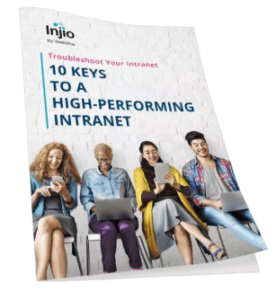Not so long ago, the idea of moving everything to the cloud was met with great skepticism. CIOs liked their data where they could see it – on their servers. But times have changed quickly, and it’s not ‘if’ but ‘when’. Microsoft Office 365 has simultaneously taken the lion’s share of the enterprise software market – but is it really the best option? Yes it is.
What are the alternatives?
Google Apps
Google Apps is great for small, nimble organisations where users work from home, sharing documents, a calendar and email. However, for companies with databases, applications, networks and more sophisticated needs, Google Apps just doesn’t have the features and capability.
Apple
Apple is certainly making a large dent in the personal computing arena, but I’ve yet to walk into a decent-sized organisation that runs completely on an Apple platform. Yes, there are some Macs and iPhones around but the IT backbone of the company isn’t built on Apple products.
Atlassian Confluence, Jira, Slack and other collaboration tools
Confluence, Slack and others are grabbing their fair share of the market in what they provide, which is a collaborative way of communicating on projects and sharing information. This is all well and good within the collaboration space, but Microsoft takes this to another level. Offering integration with Microsoft Office and the ability to configure a Digital Workplace to the organisation’s needs is simply not possible to the same degree with these applications. Similarly, managing O365 user access via Active Directory makes it easy to enable secure Single Sign-On (SSO) with no need to create separate accounts.
Why is Microsoft Office 365 better?
Most companies use Microsoft Office – Word, Excel, PowerPoint and OneNote, which all come with Office 365, including web versions of these applications. Office 365 also provides Microsoft Exchange, SharePoint, Skype for Business, Planner, Teams, Groups and more, with rich functionality across multiple applications. Then there’s Microsoft Dynamics 365 – a full ERP and CRM – all available through the Office 365 portal. And with integration to Microsoft Azure and even LinkedIn (owned by Microsoft), you can see the breadth of possibilities.
Because Microsoft is so embedded with corporate environments, IT department skill sets are already largely Microsoft-based.
If you compare certain products with specific Office 365 features individually, they stack up well. But considering the complete O365 capability, and the fact that Microsoft continue to release enhancements and new features almost monthly, there’s no comparison. Office 365 is here to stay, so it’s time to embrace it and make it work for you.
A Strategy for Microsoft Office 365
It’s essential to have a clear strategy on how you’ll use Office 365 in your organisation. For example, will you enable Groups, Teams, SharePoint team sites, OneDrive, Yammer, Skype for Business, Planner, Delve?? Will you turn on everything right from the outset, or use a more measured approach?
Giving people access to everything at once introduces a confusing smorgasbord of technologies that often have similar features. On the other hand, some organisations limit themselves to Exchange online and make little use of anything else. Don’t fall for that trap either.
Many people start with the available features and decide how they’ll use each one. Would you do the same thing in Bunnings, wandering about buying tools without first working out what you need to build?
Instead, look at where your organisation is going. What ambitions does it have over the next five years? Get clear on what the vision is then set your strategy accordingly. Once you have a clear picture, you (or a trusted IT consultant) can look at the Office 365 toolbox and see what fits.
Enter the Digital Workplace
One option to grow user adoption is an intranet or Digital Workplace – a central location that pulls in information and apps from different parts of Office 365 and helps guide users to the right tools for the job. If you can present Microsoft Office 365 services to people in a straightforward way as part of their workday, it will encourage adoption and homogenise the tools that people use for certain tasks.
Office 365 is the business ecosystem of choice for the world’s most successful companies – 70% of Fortune 500 companies have purchased Office 365 within the last year. Don’t miss out on the productivity gains it offers, start creating your plan to harness the benefits today.
This is an extract from my new book Digital Transformation from the Inside Out. Click here for more information about the book and to download a free 3-chapter extract.
This entry was posted in Digital Transformation, Office 365 and tagged Digital workplace, productivity. Bookmark the permalink.






